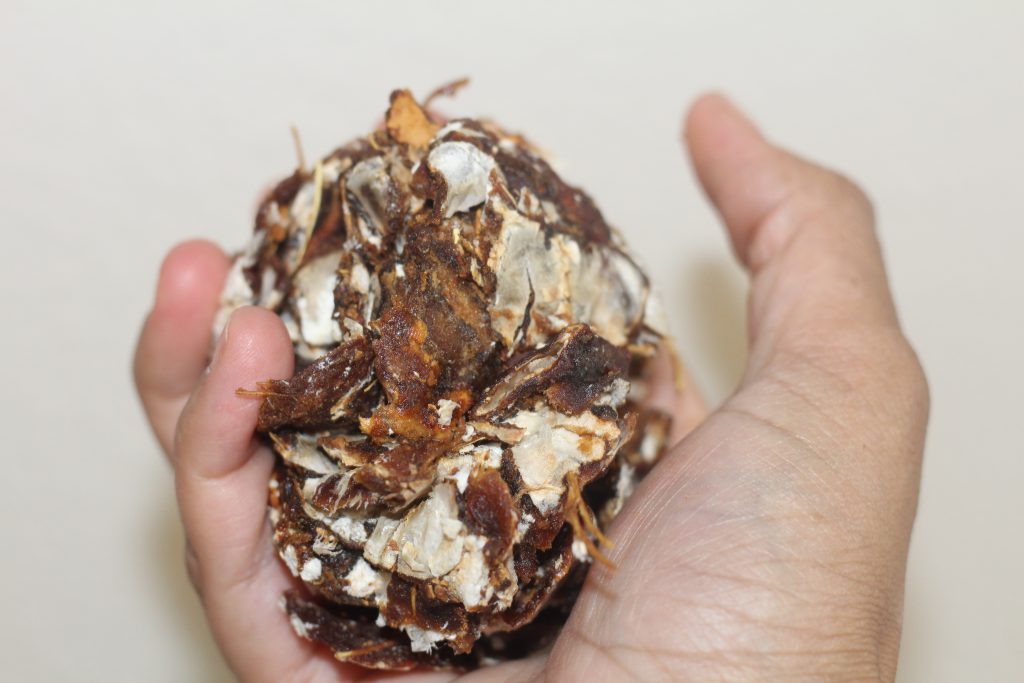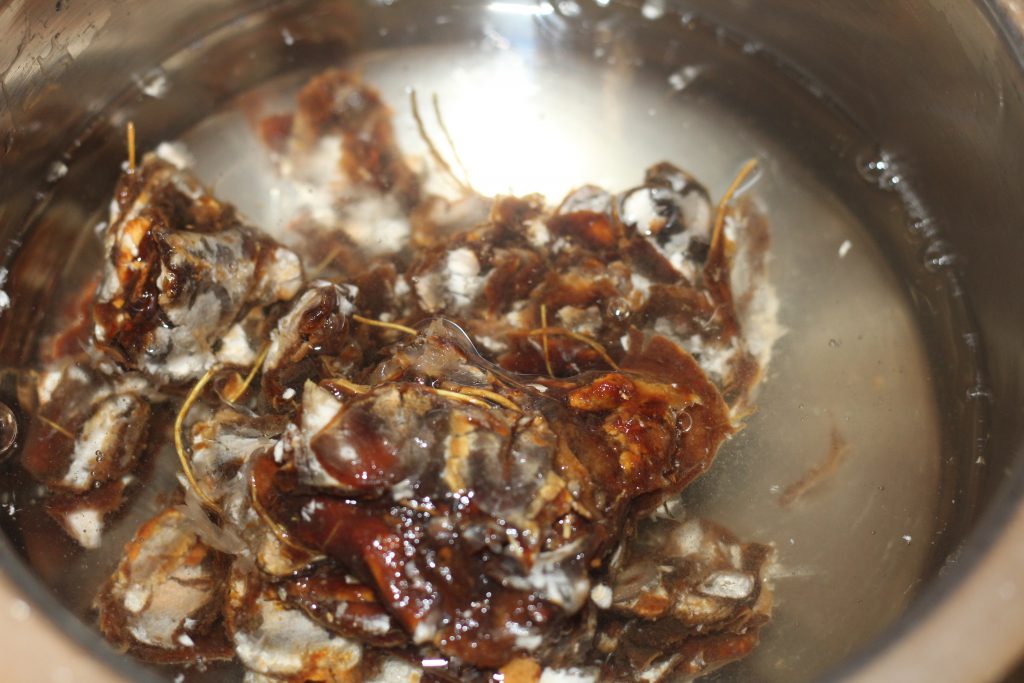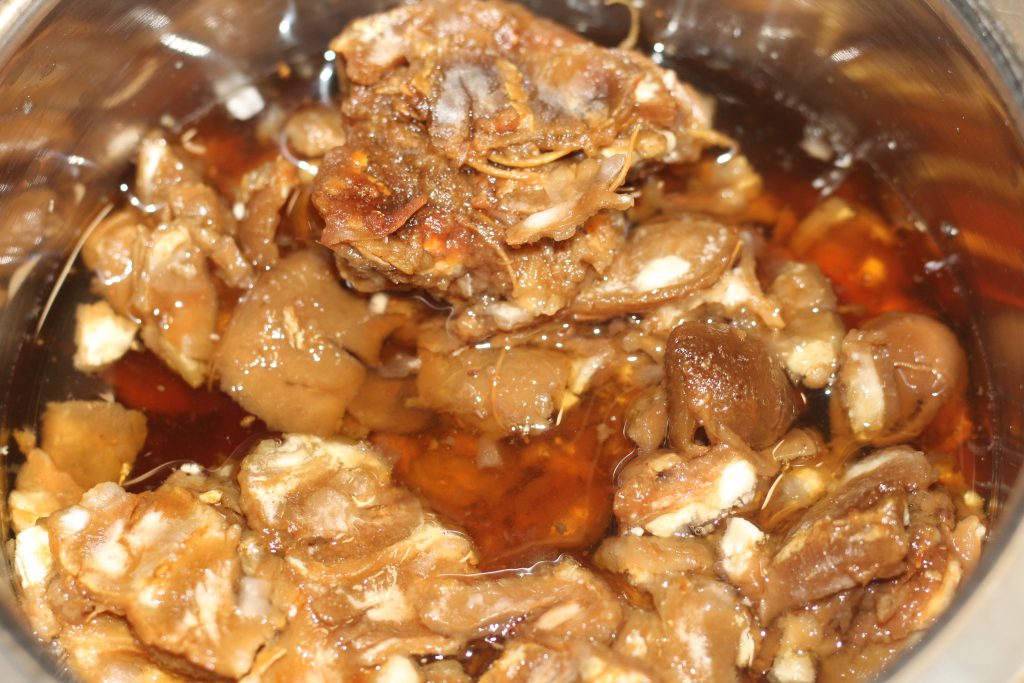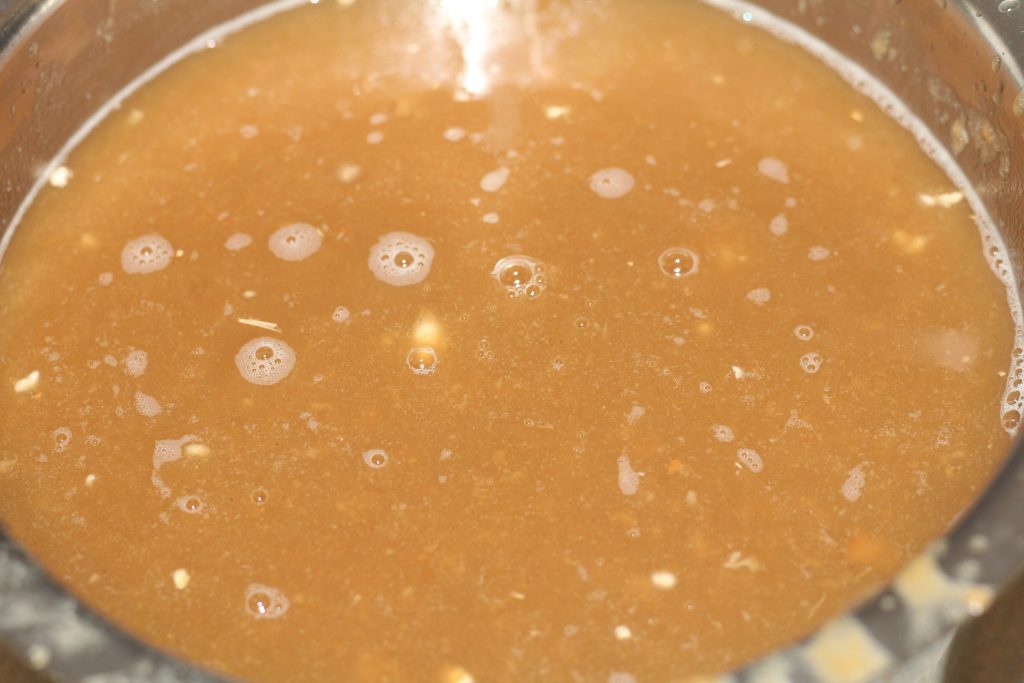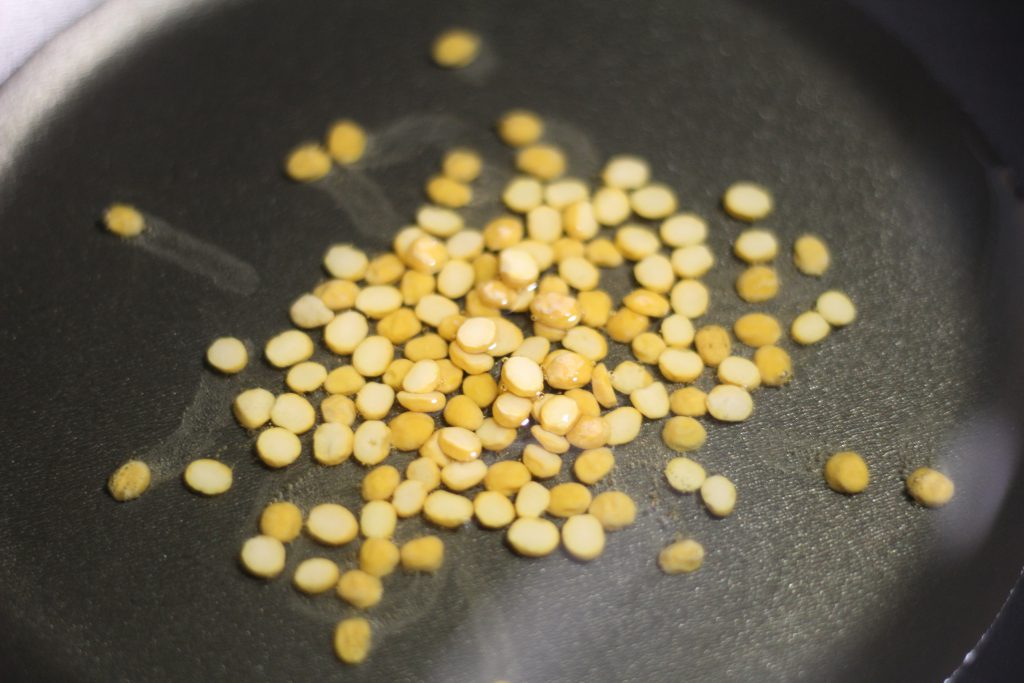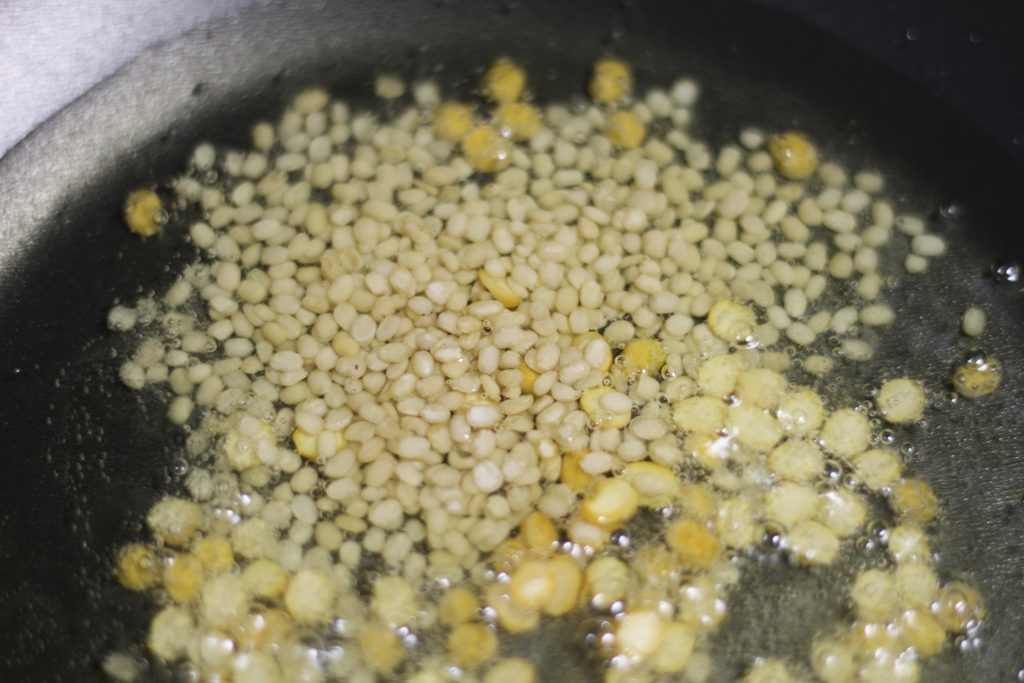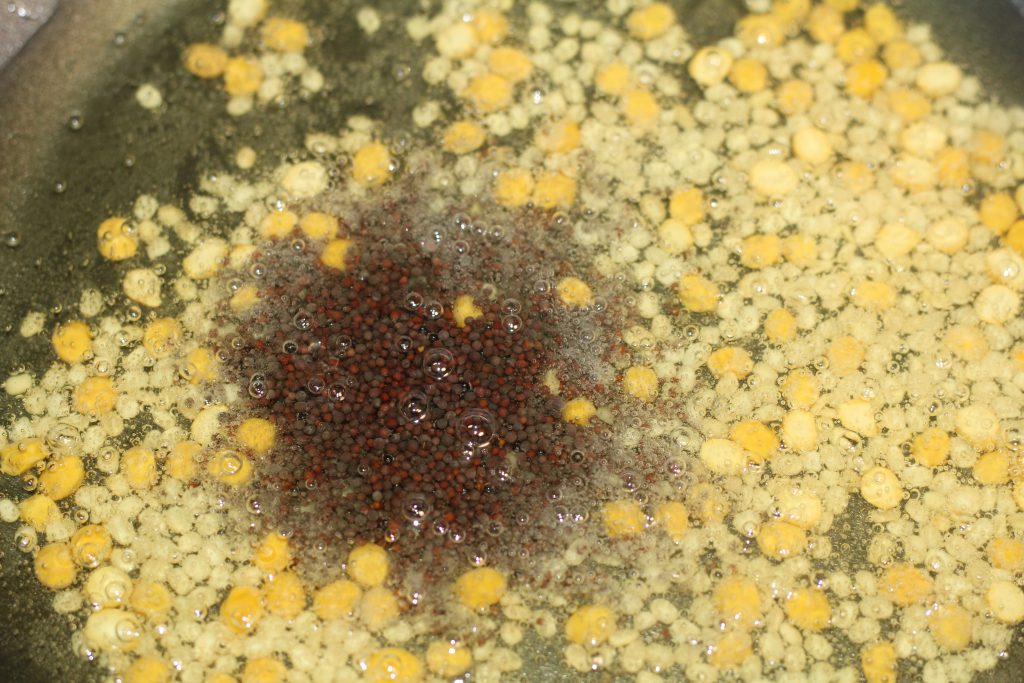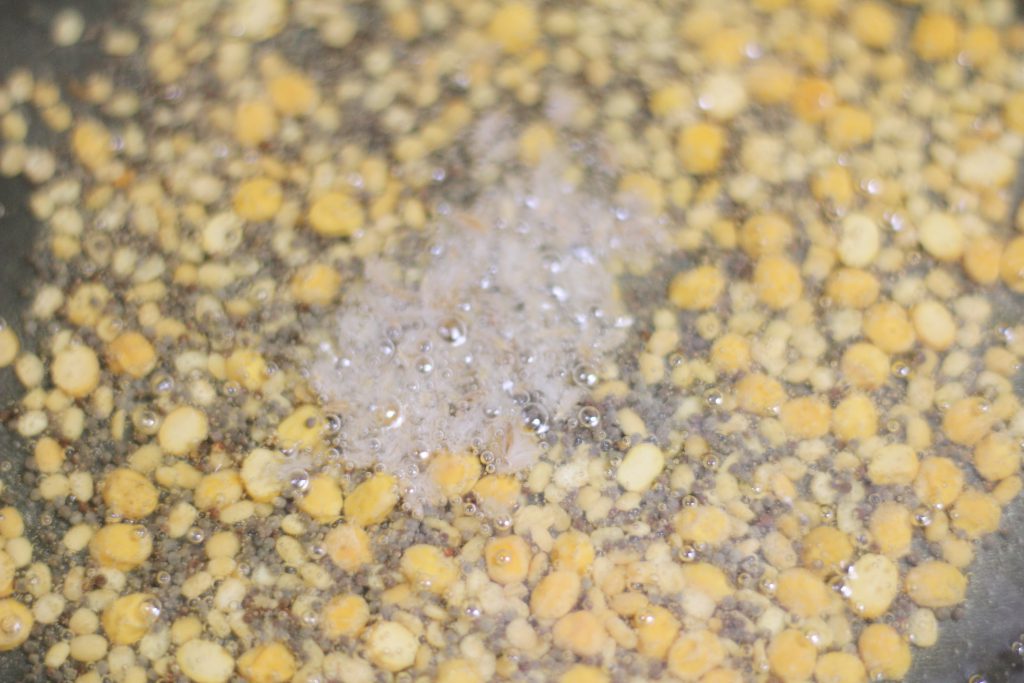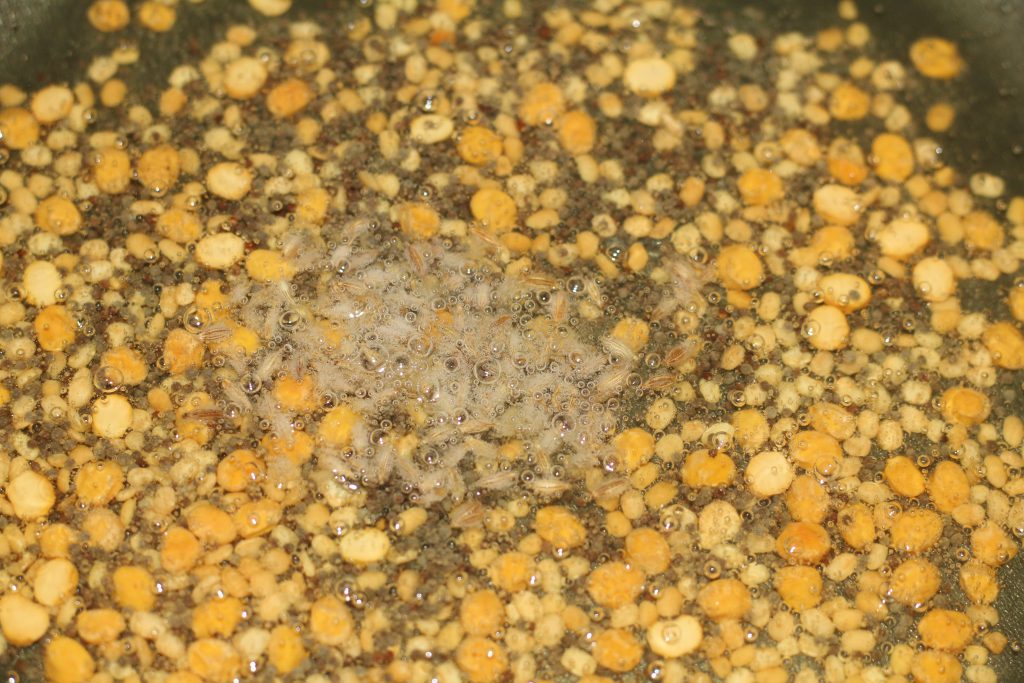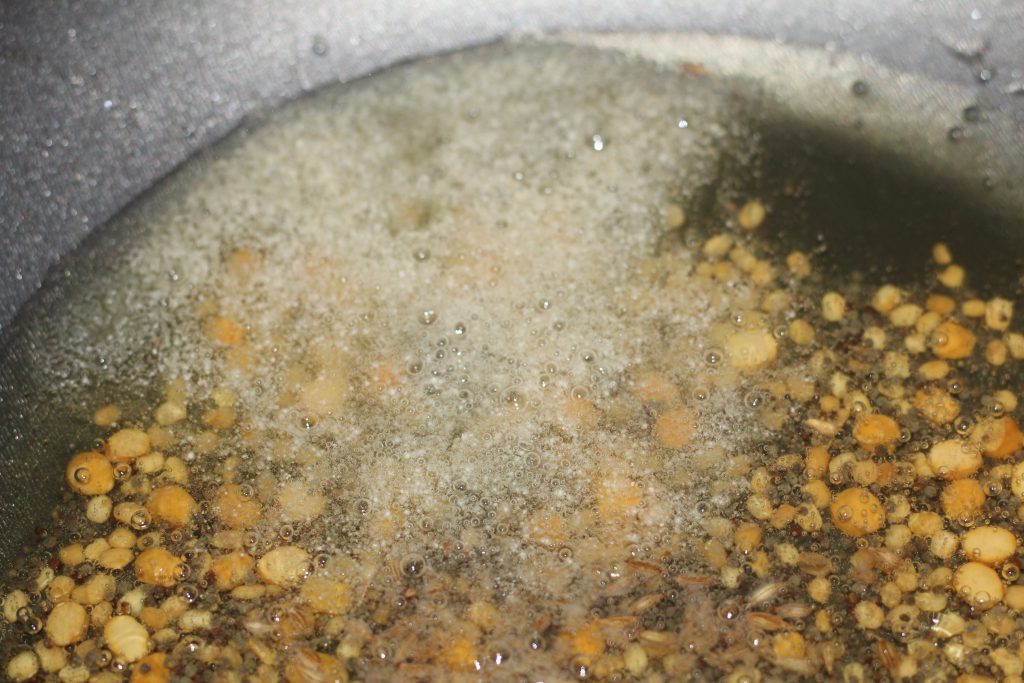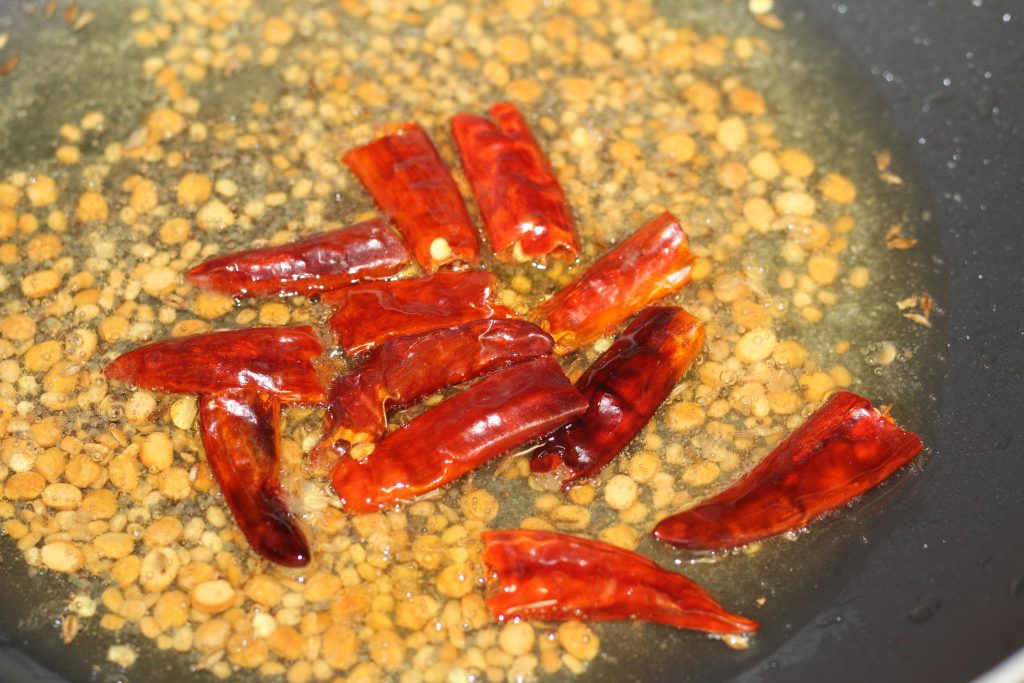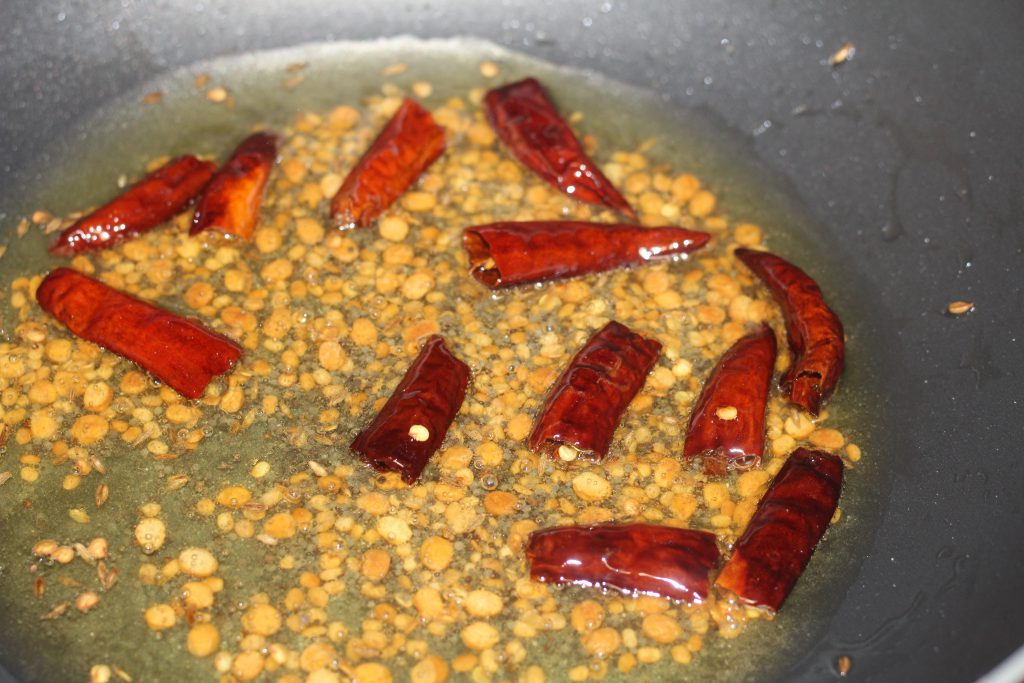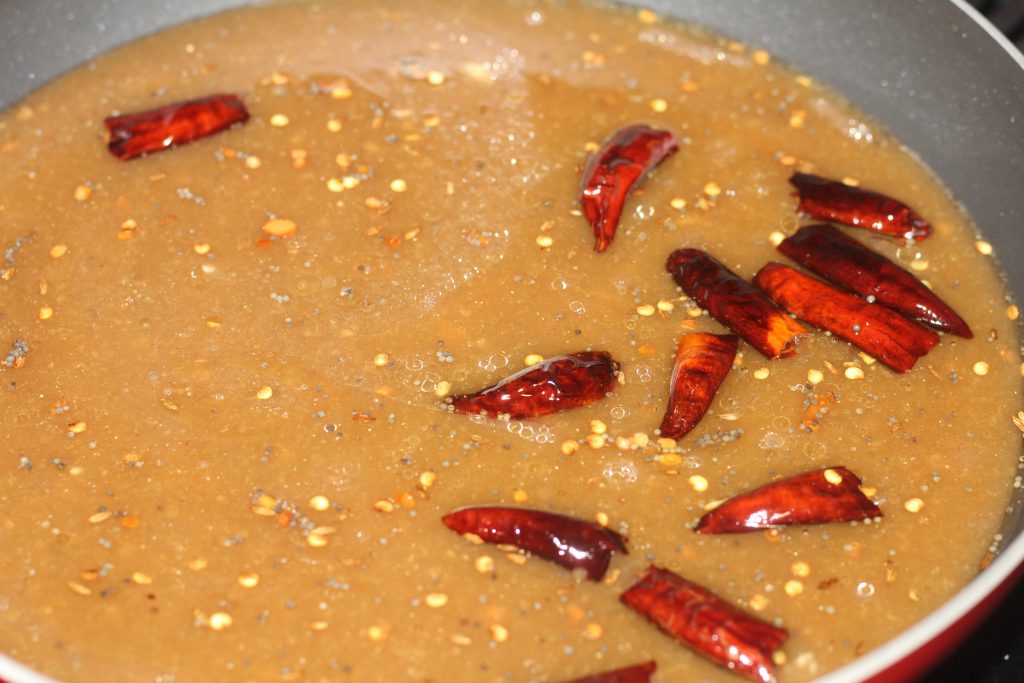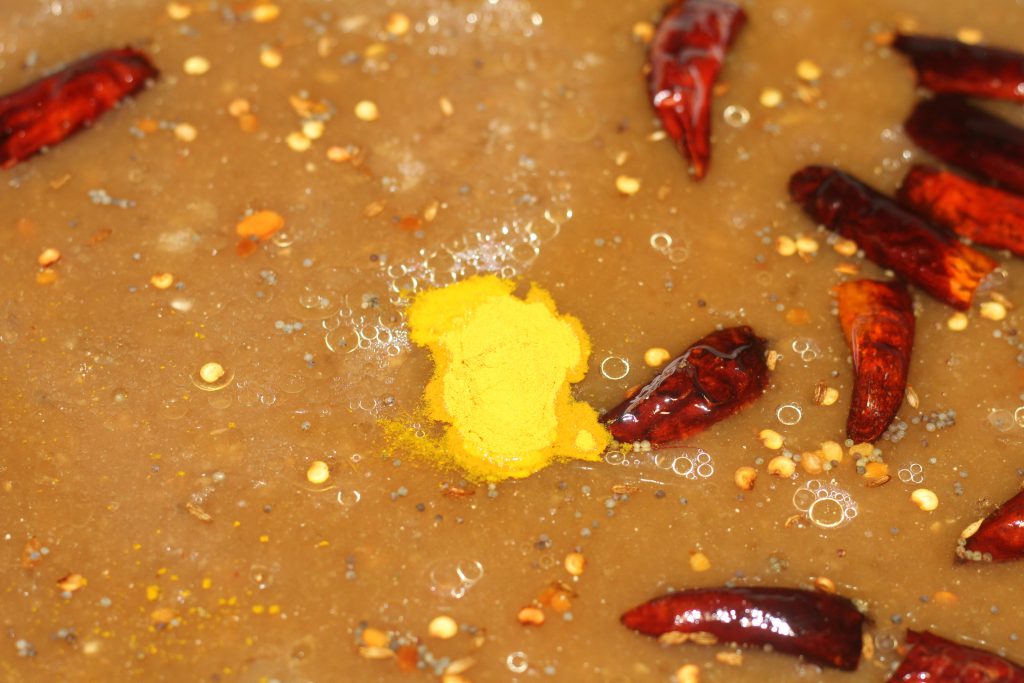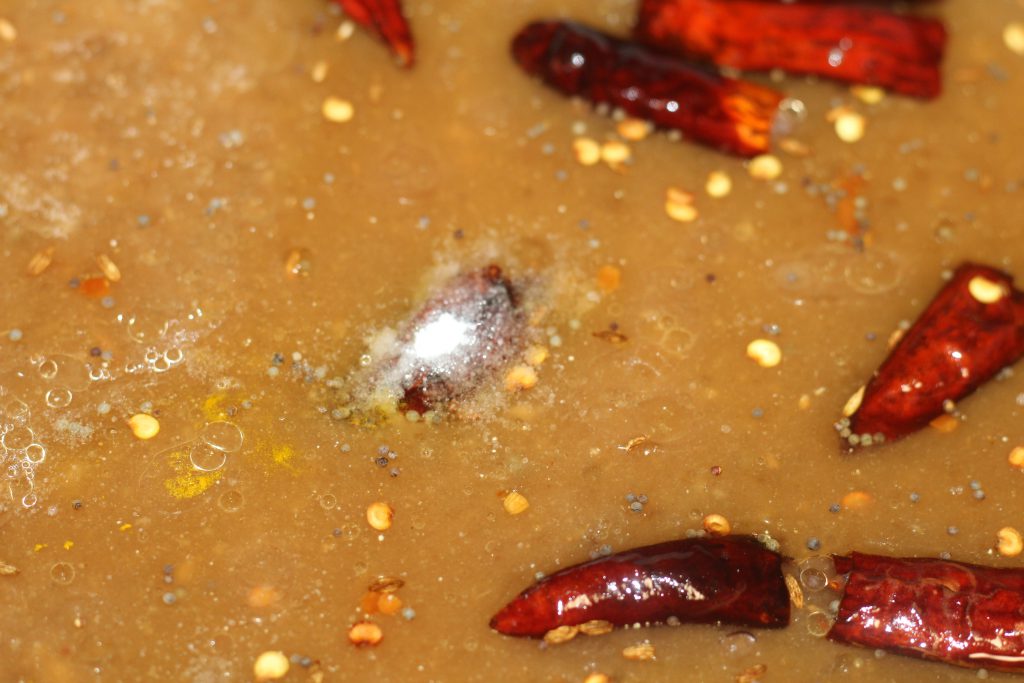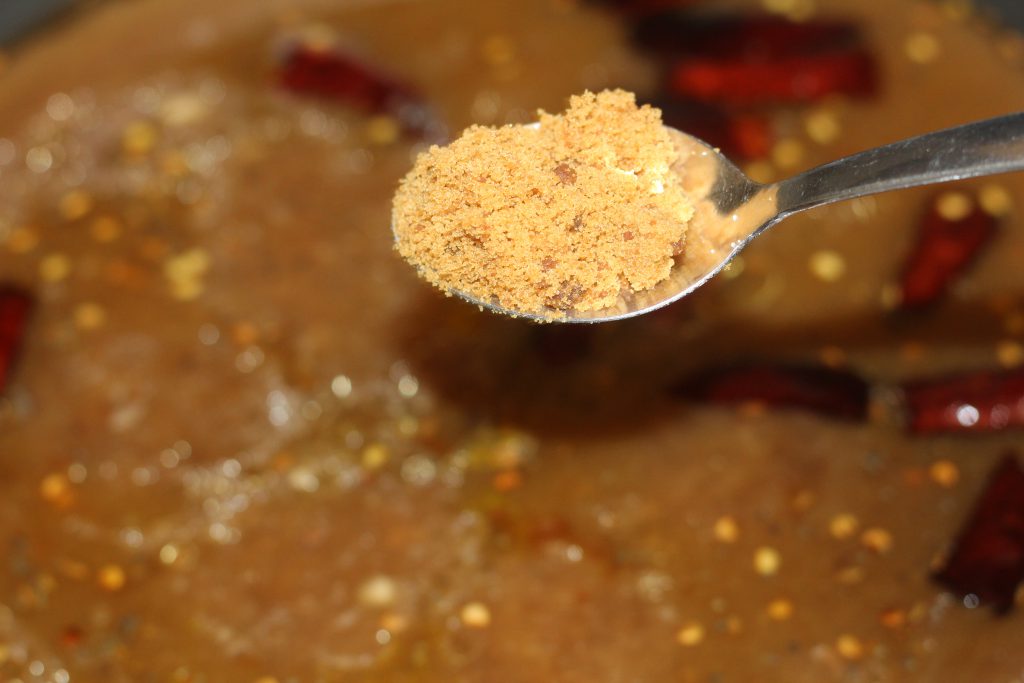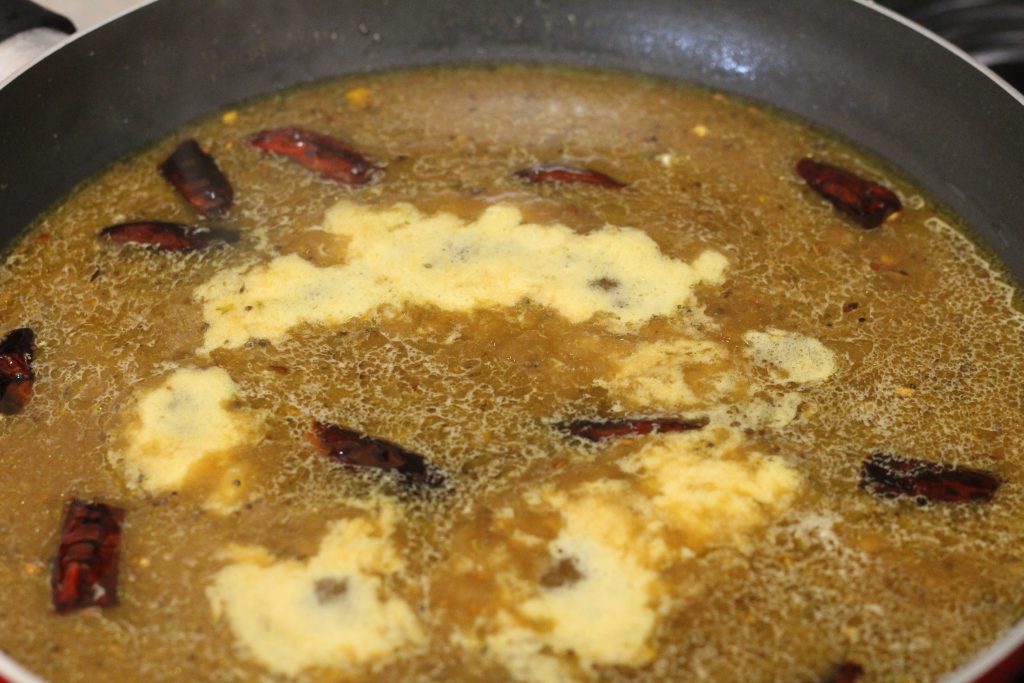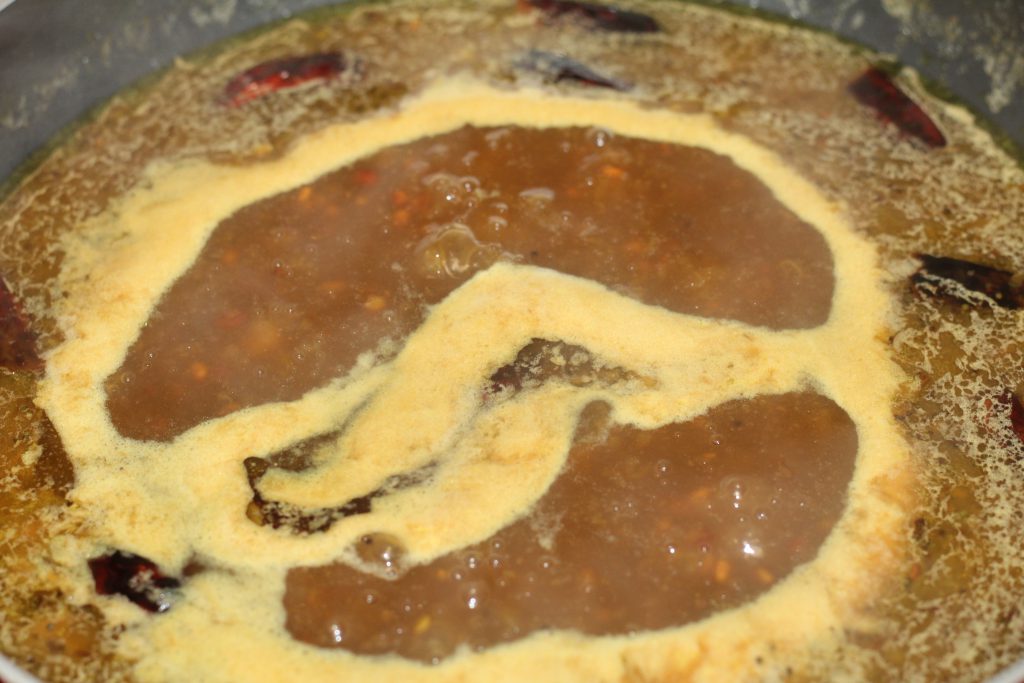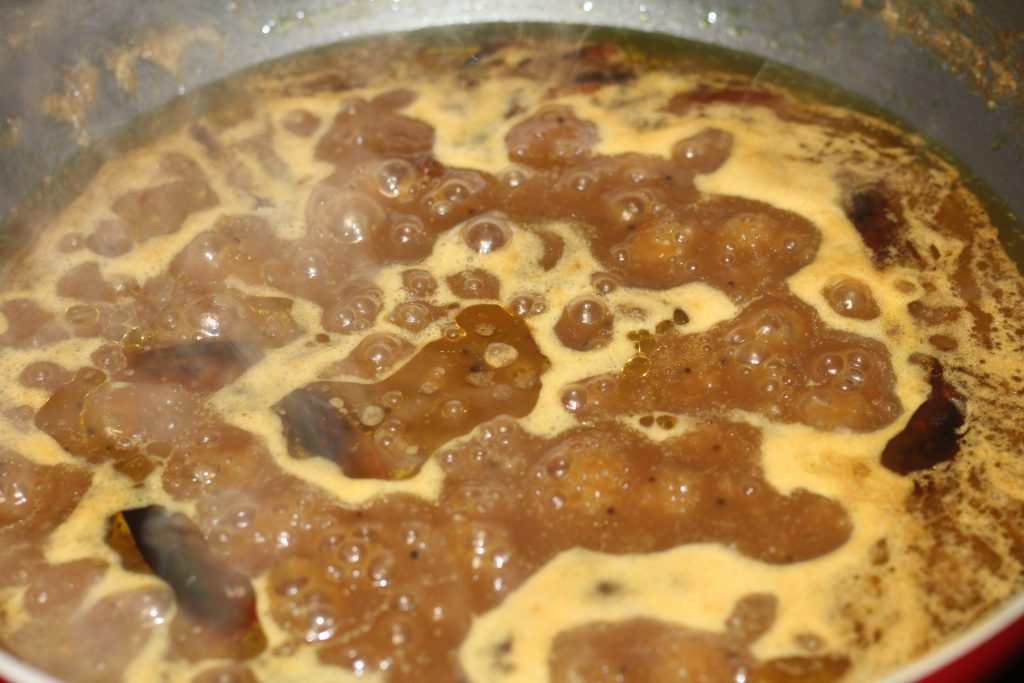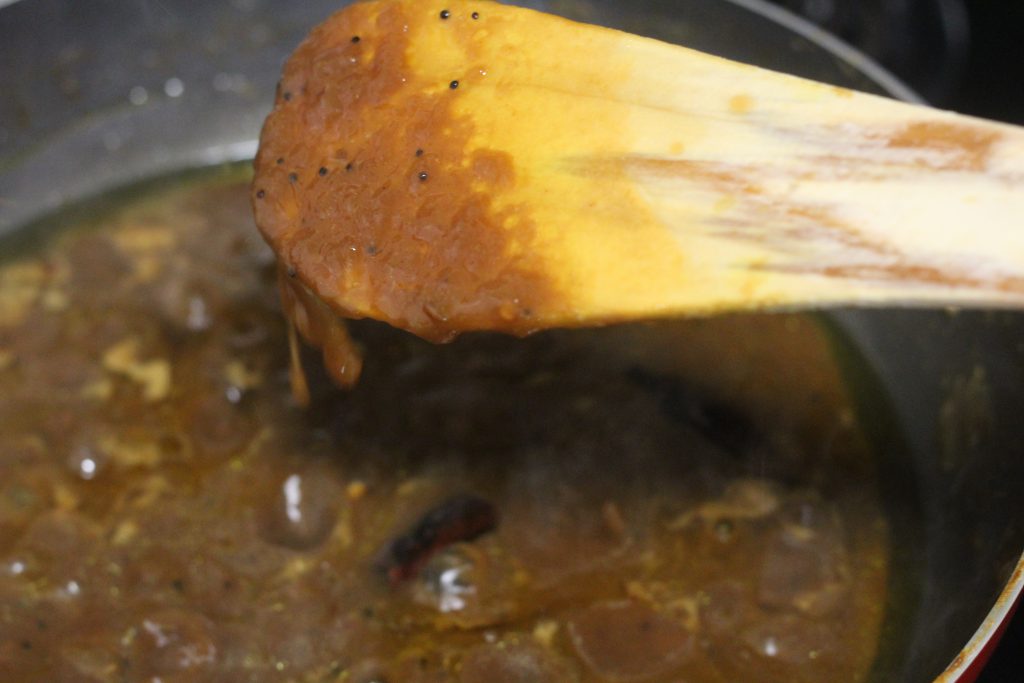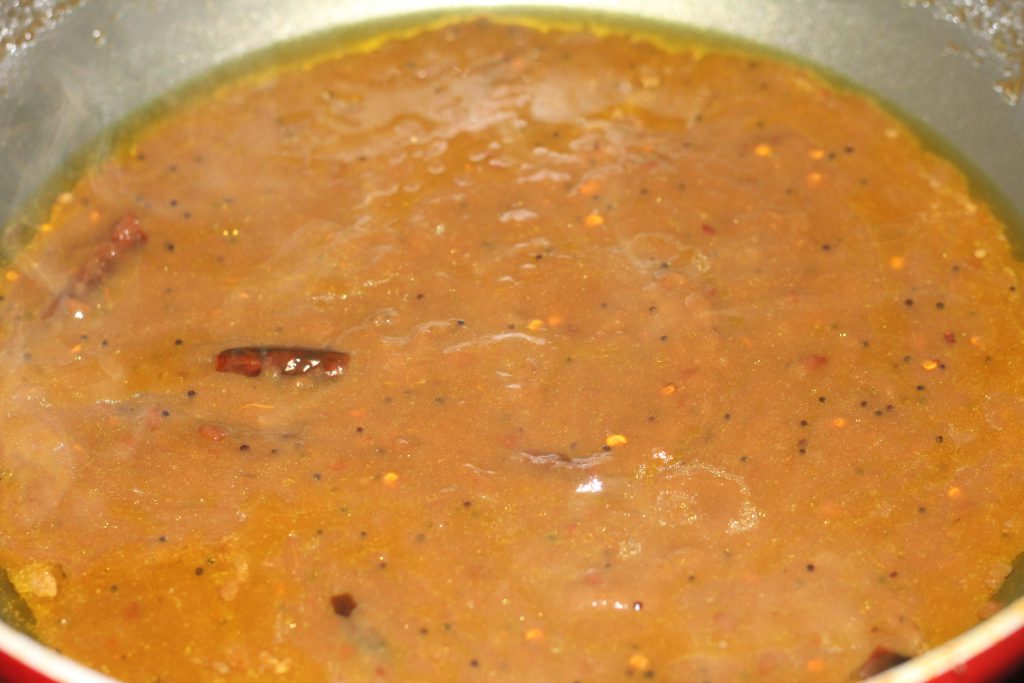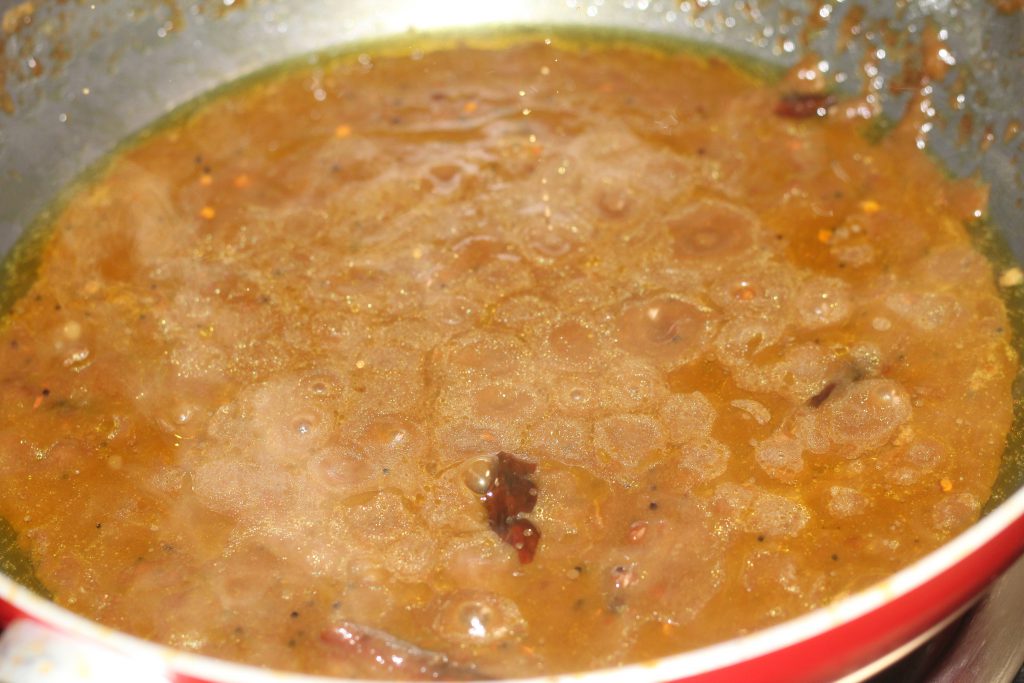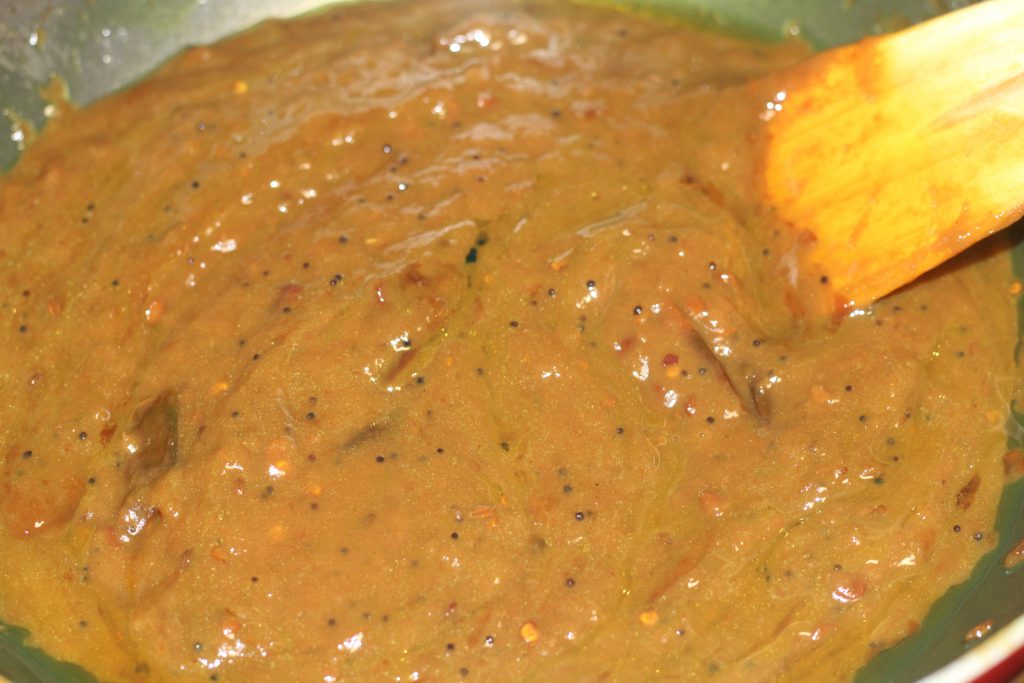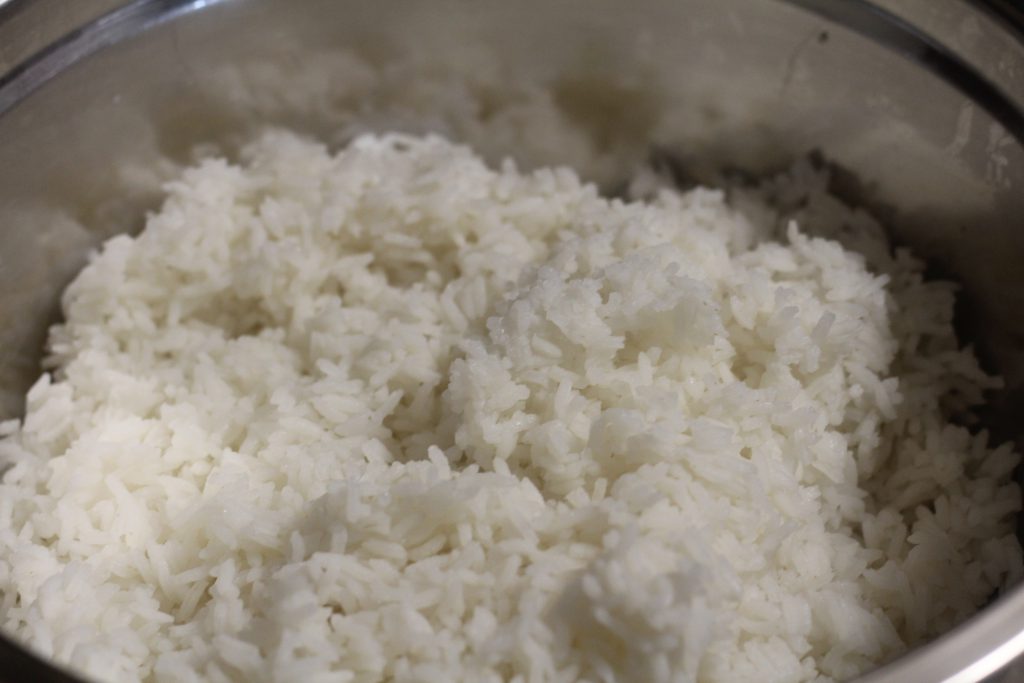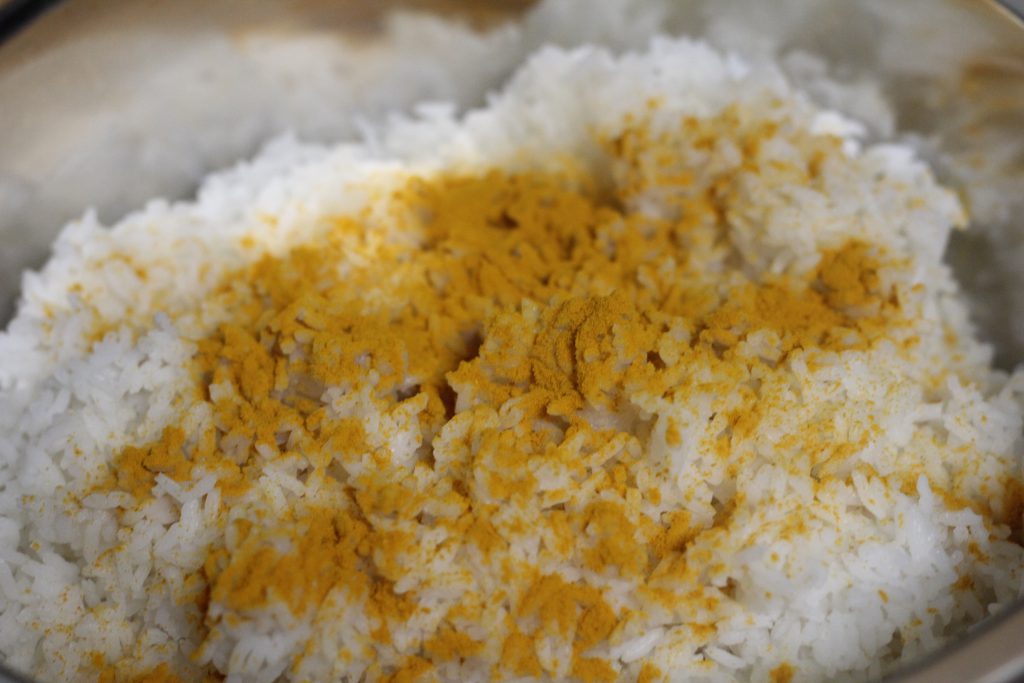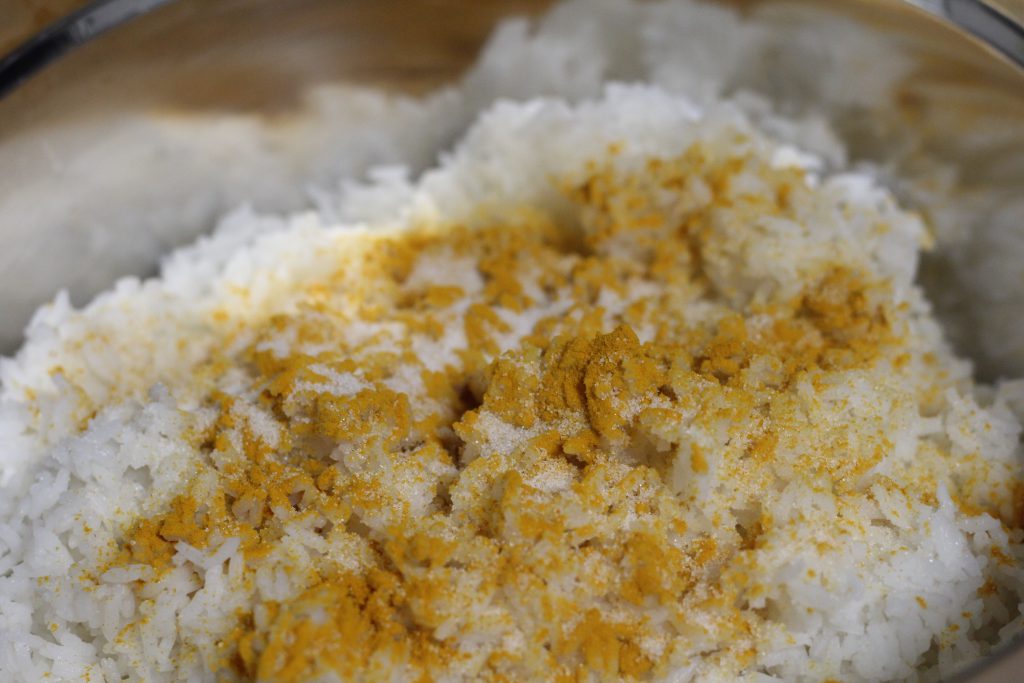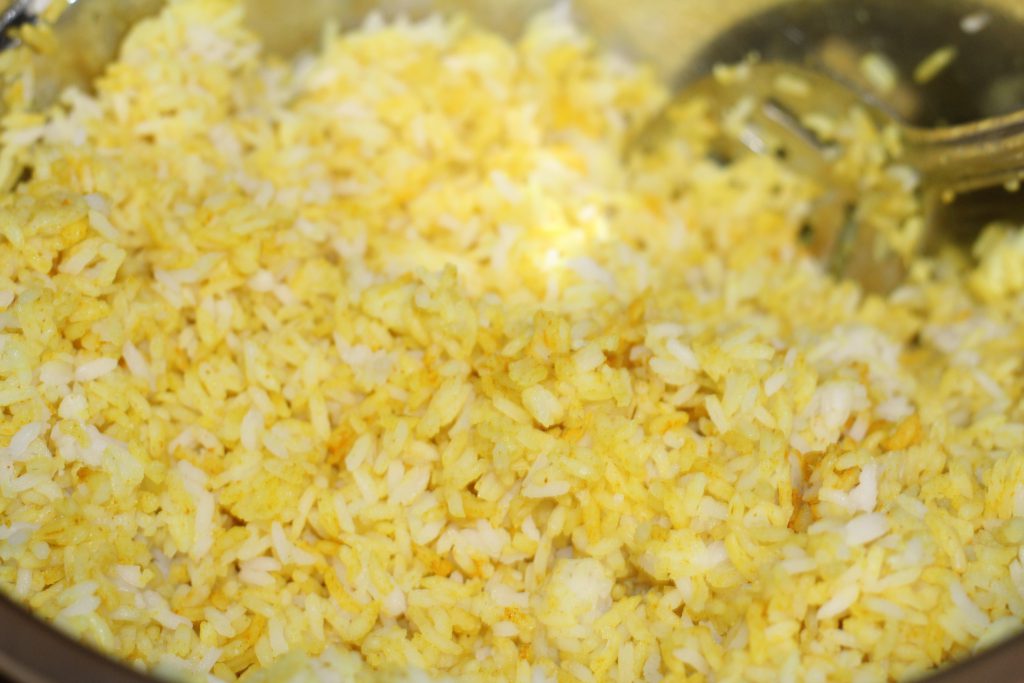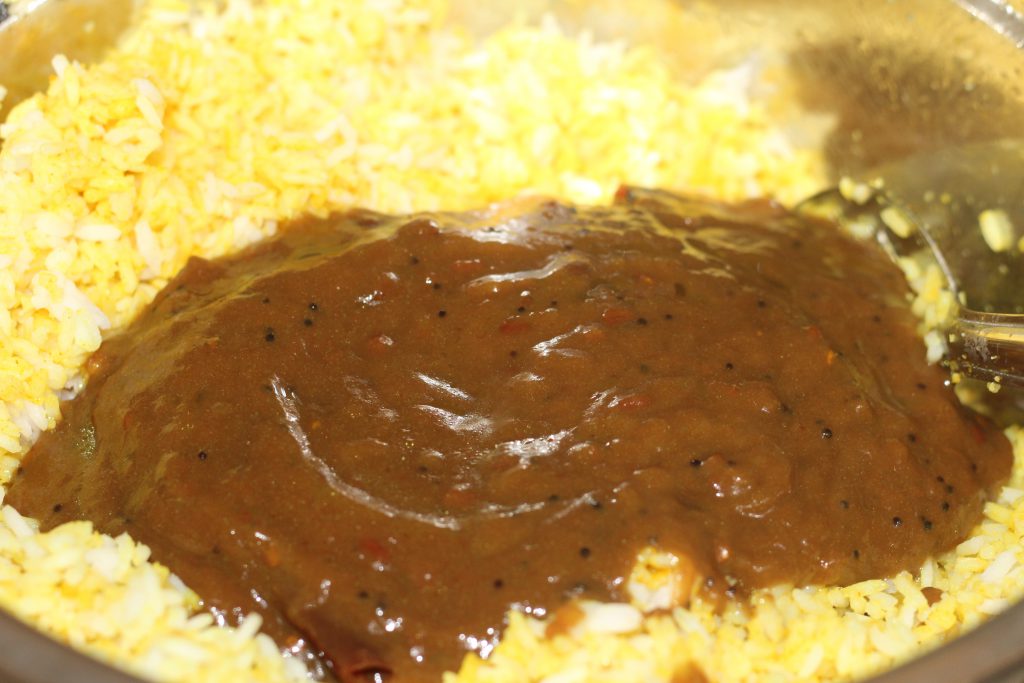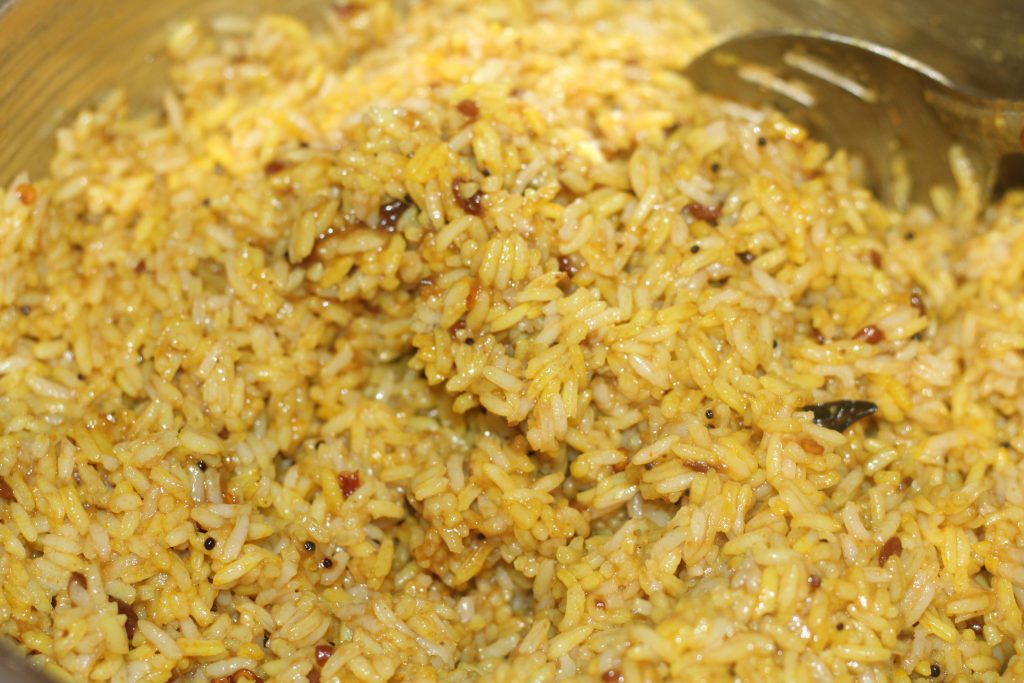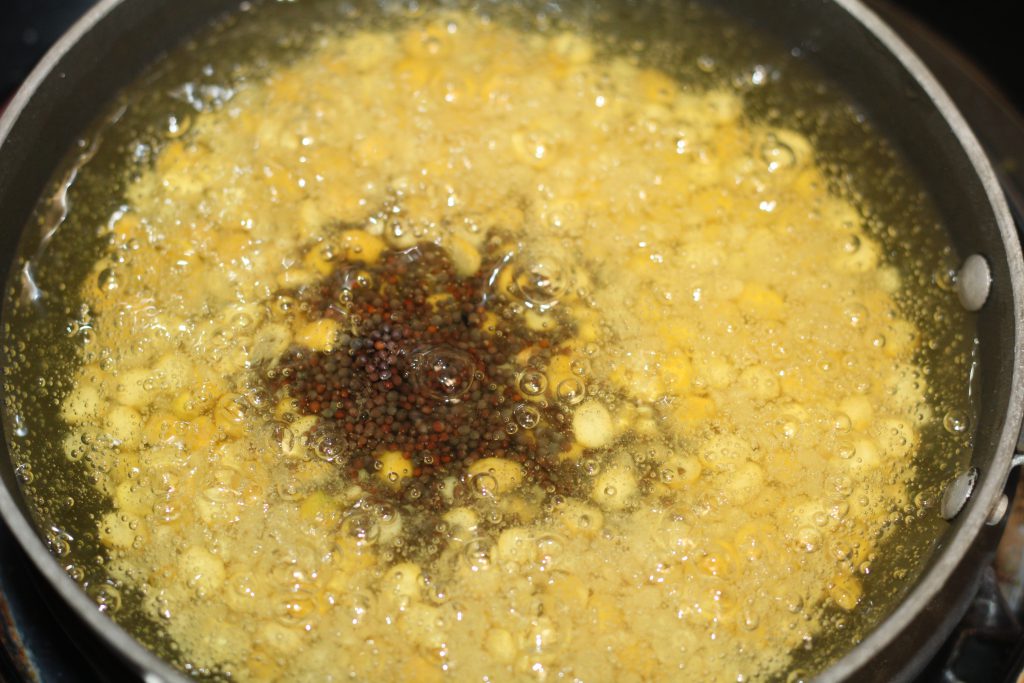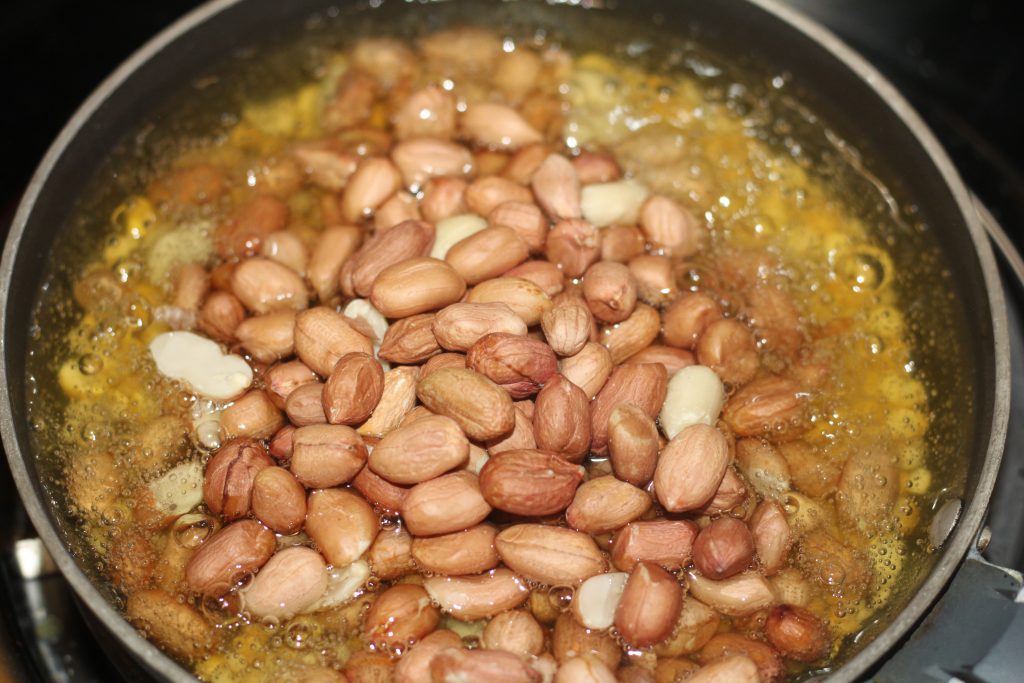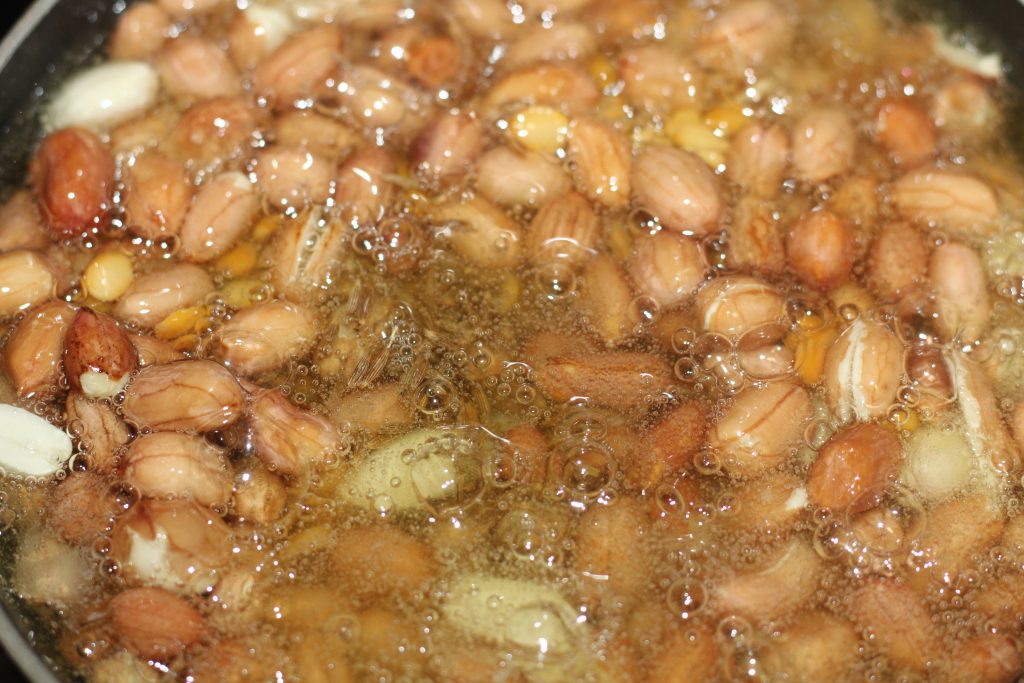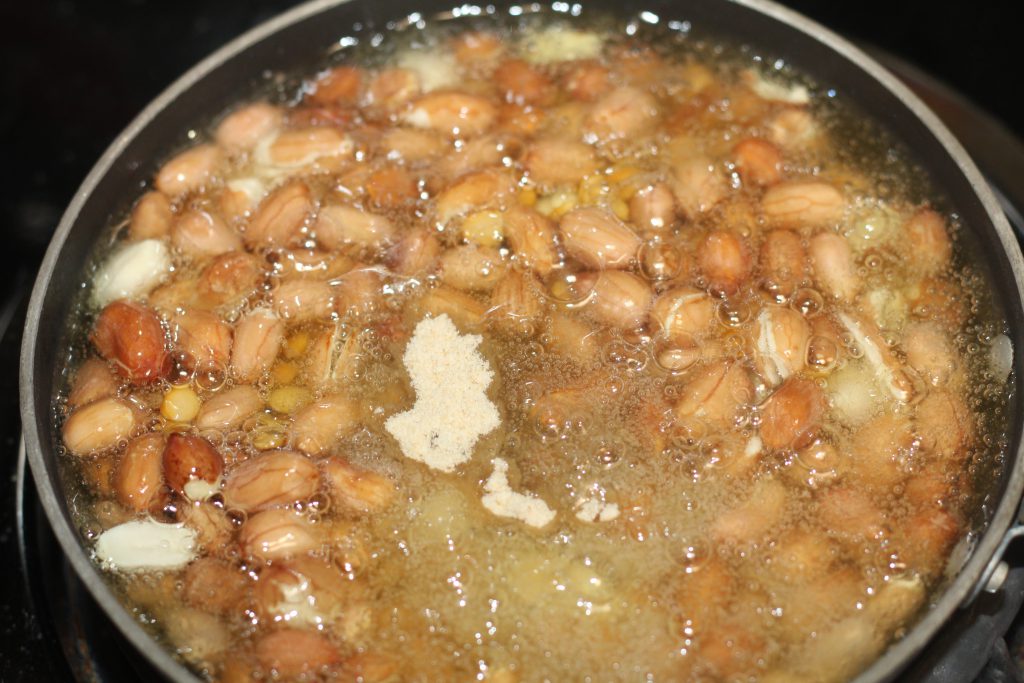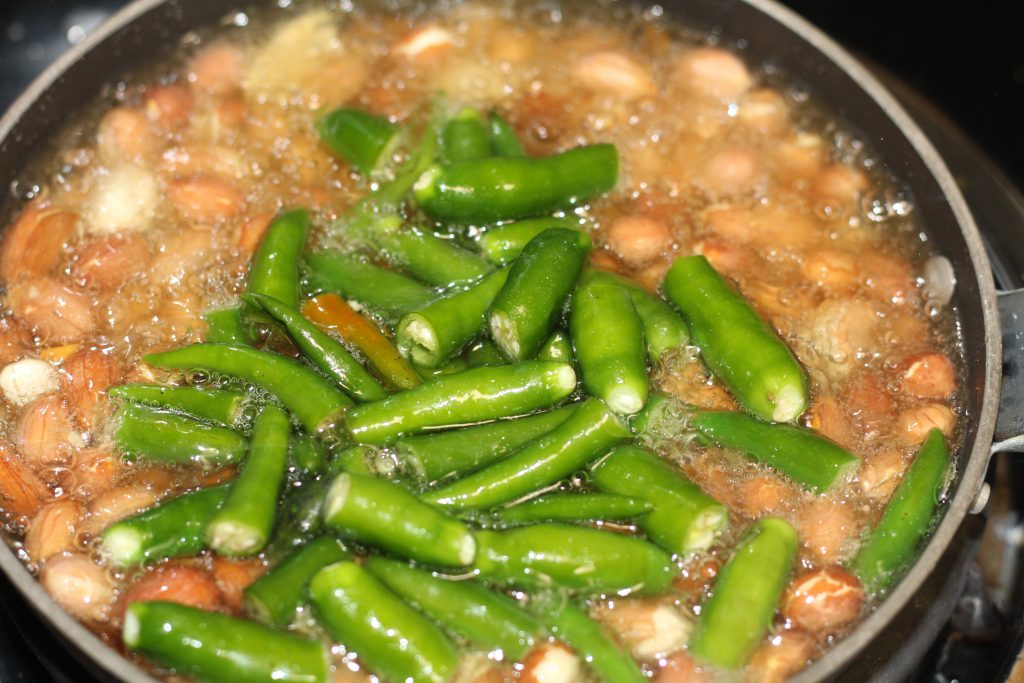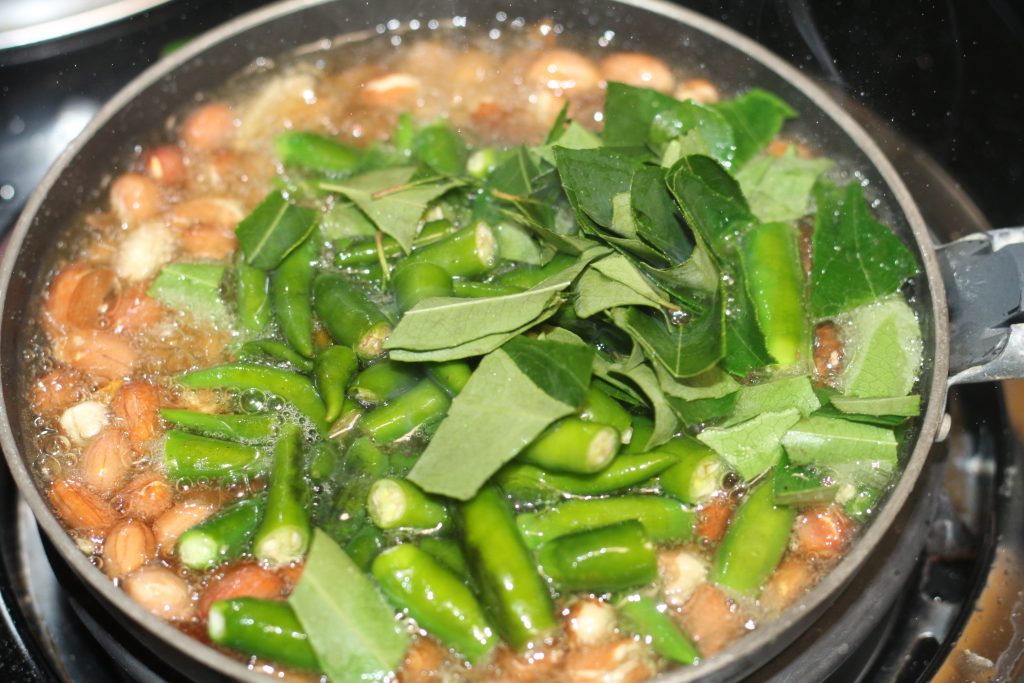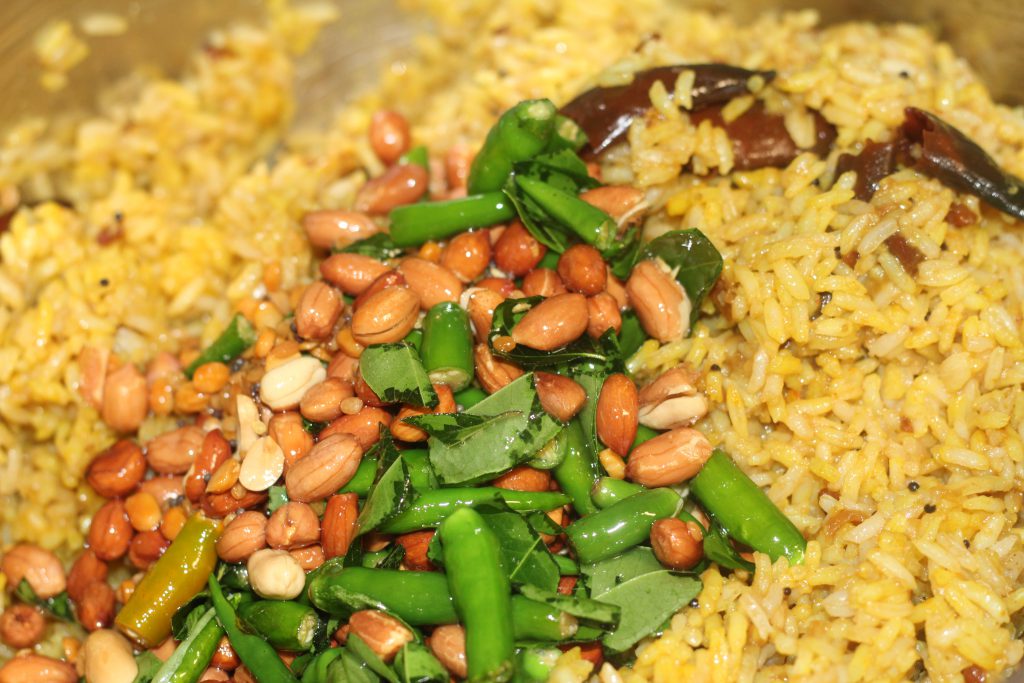Chintapandu Pulihora (Tamarind Rice)
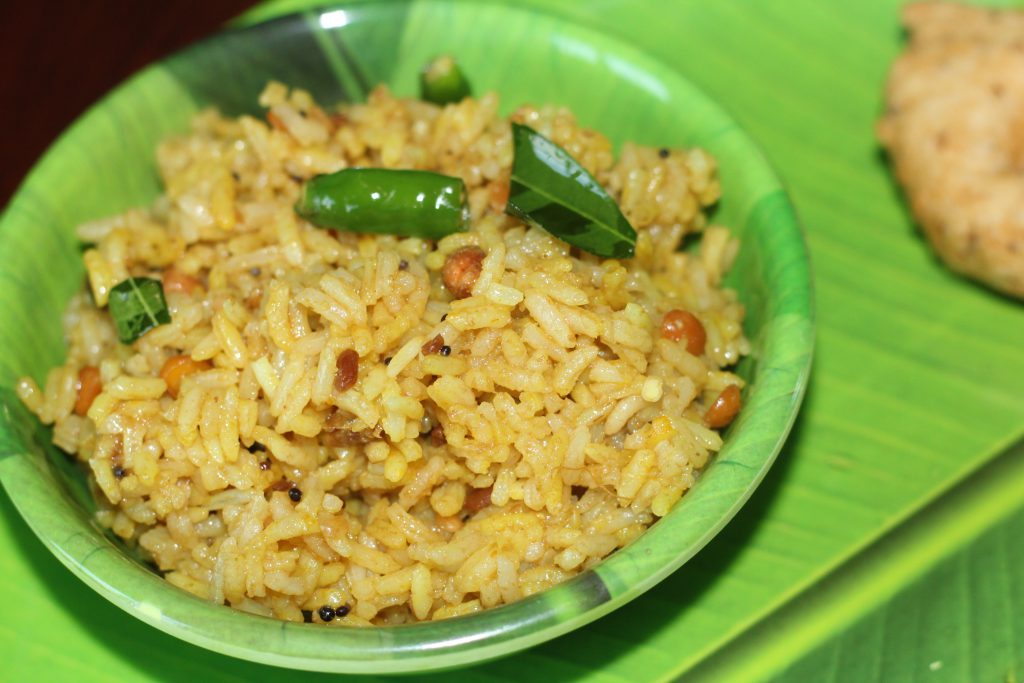
One of the best recipes that my mom makes is Chintapandu Pulihora. It’s not super hard to make, but it is a little time consuming so I do not make it a lot. It’s an absolute favorite of my entire family. My sister and me LOVE it so much, so my mom makes it multiple times when we are visiting her. Whenever I make it, it’s the only item that is eaten and nothing else is touched. VJ also loves it so much, he’s a fan of rice items but Nimmakaya Pulihora and Chintapandu Pulihora are both his absolute favorites. Whenever there is a potluck anywhere, everyone requests my mom to bring her famous chintapandu pulihora. Even in my apartments every year for Ganesh Chaturthi my mom is asked to make this recipe for over 40 people and she makes it without complaint. My mother in law usually makes it with leftover rice quite frequently, which is amazing too. These rice items do not take a long time to make and are very easy too. But with tamarind there are all these strings (the fiber parts) and seeds. Even though I buy the seedless tamarind, it still has some seeds left.
My mom makes it look very easy. She makes it in a matter of minutes and makes it look like she didn’t have to put too much effort. But for me it’s very hard. Making the paste for the rice requires a little bit of effort. Though it’s easy, it is time-consuming. Chintapandu Pulihora is made in every South Indian state by is called by different names –Puliondarai, Puliogare, and in Andhra Pradesh Pulihora. It’s made mostly during festivals, but as we love it mom makes it whenever we want. The best thing about this recipe is you can make the paste ahead of time and keep it in the fridge for up to 10-15 days (after that it could go bad). A lot of them soak the tamarind in boiling hot water and then make the tamarind into a paste in a food blender. This version takes a short time to cook. The version which I have written down below takes a longer time to cook, but is mostly dumping the ingredients into a pan and letting it take its time to cook. You can make this with leftover rice or with freshly cooked rice, whatever you have in handy.
Ingredients
Cooked Rice – 4 cups
Chintapandu (Tamarind) – 100 grams (size of a tennis ball)
Bellam (Jaggery) – 3 tablespoons (or sugar of the same quantity)
Salt – As needed
Turmeric – 1/2 teaspoon
Dried Red Chilies – 5
Oil – 4 tablespoons
Channa Dal – 1 tablespoon
Urad Dal – 1 tablespoon
Mustard Seeds – 1 teaspoon
Cumin – 1 teaspoon
Asafoetida – 1/4 teaspoon
For Tempering Over the Rice:
Oil – 2 tablespoons
Channa Dal – 2 tablespoons
Urad Dal – 2 tablespoons
Mustard Seeds – 1 tablespoon
Peanuts – a handful
Cumin – 1 teaspoon
Asafoetida – 1/4 teaspoon
Green Chilies – 5
Curry Leaves – 1 twig
Salt – As needed
Turmeric – 1/2 teaspoon
How to Make
Step 1: Wash the tamarind a little and soak it in water for at least 2 hours. You can use hot water to speed up the soaking process.
Step 2: Once the tamarind is soft from the soaking. Squeeze out the juice into a big bowl. This squeezed out paste shouldn’t be too watery. If it’s too watery it takes a long time to cook.
Step 3: In a deep bottomed pan, add oil. Once hot, add channa dal, urad dal and fry them a little. As they start to change color, add mustard seeds. As the mustard seeds splutter, add cumin and asafoetida. Immediately add the dried red chilies.
Step 4: As the dried red chilies are turning dark, add the tamarind paste that you have aside. Now add turmeric, salt, and jaggery mix it well.
Step 5: Keep mixing this every 5 minutes as it starts boiling. It has to boil, until all the water evaporates and you are left with a thick paste.
Step 6: Keep this aside to cool down a little.
Step 7: To the rice add salt (remember you’ve already added salt to the paste, so adjust accordingly), turmeric and mix it well.
Step 8: First take 4 tablespoons of the paste and add it to the rice, mix it well, if it looks likes it needs more paste add some more.
Step 9: In a small pan, add oil. Once hot, add channa dal and urad dal. As they start to brown, add mustard seeds and peanuts. When the peanuts turn dark, add the cumin and asafoetida. As the mustard seeds start crackling, add green chilies and curry leaves. Mix it a little.
Step 10: Add it to the rice and stir it well. Serve as a side or as itself.
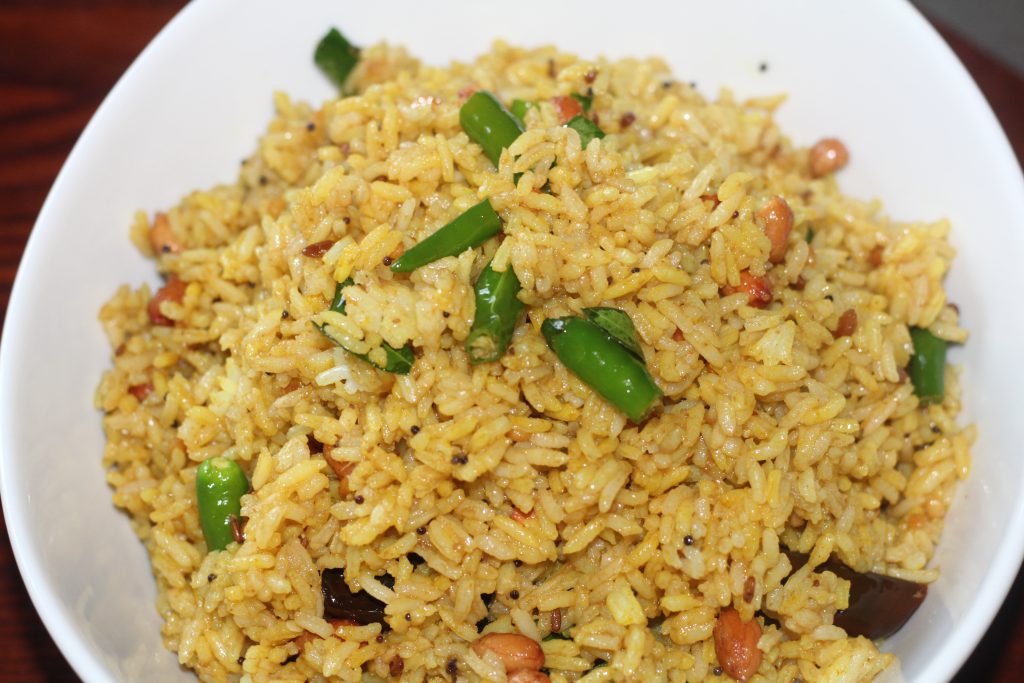
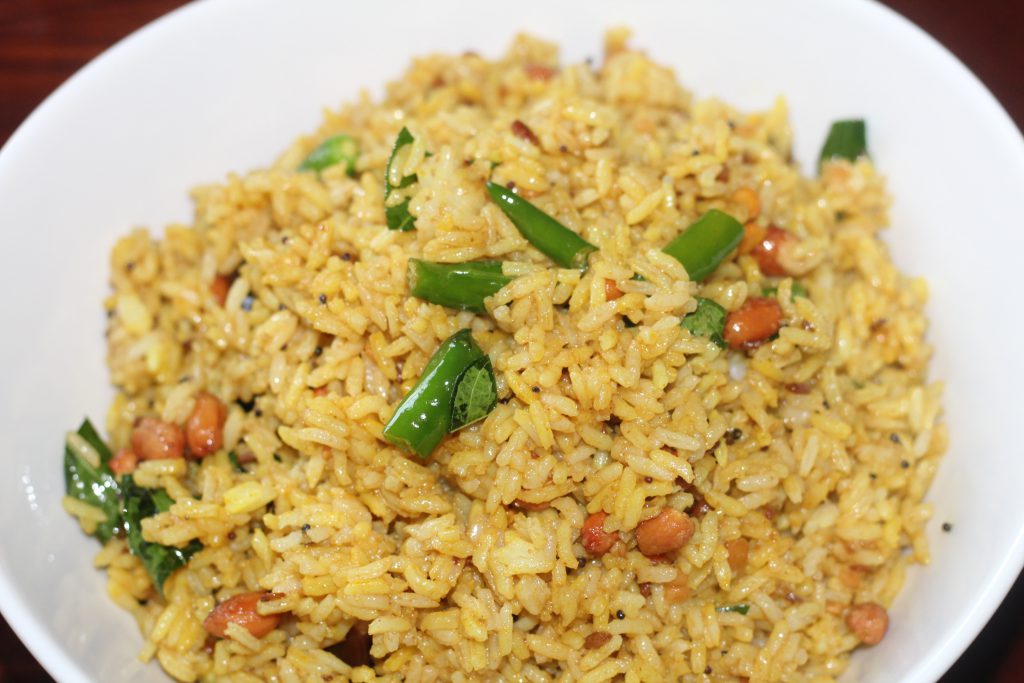
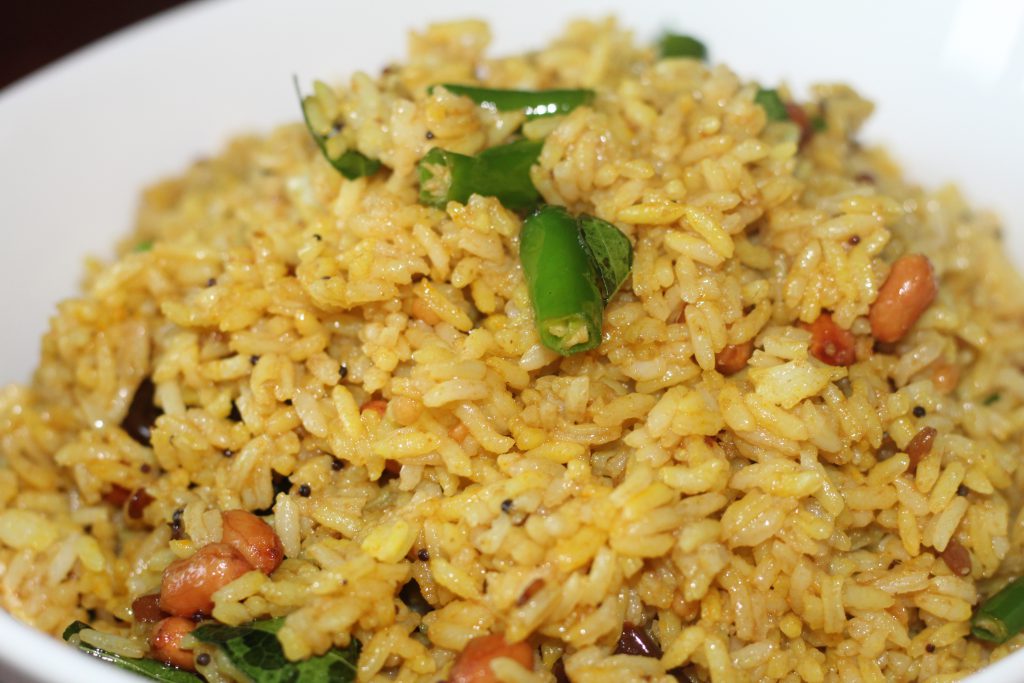
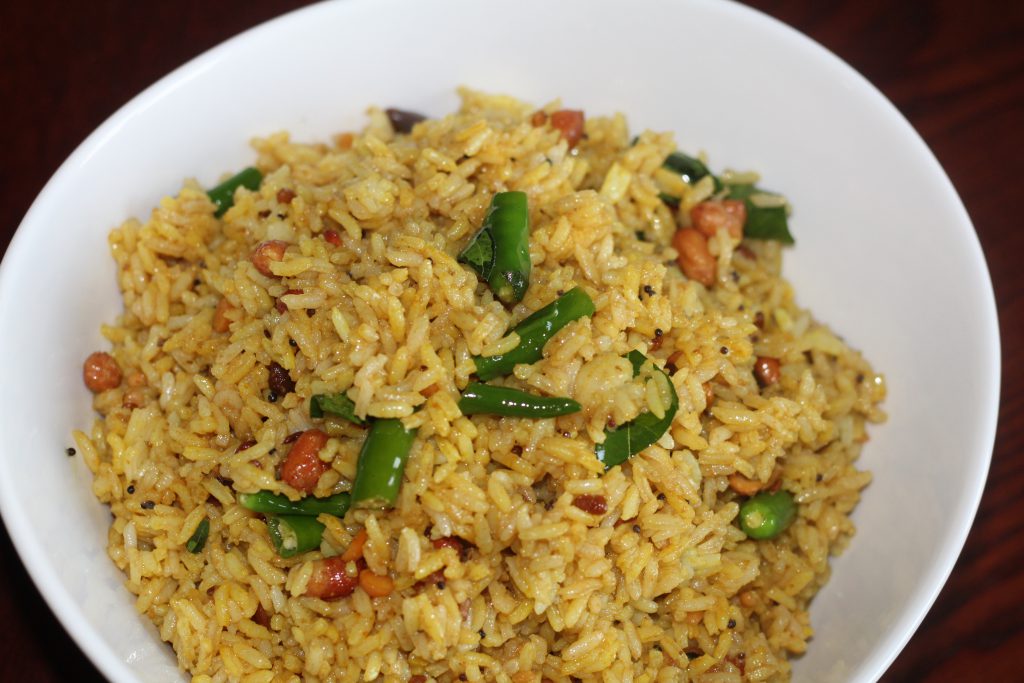
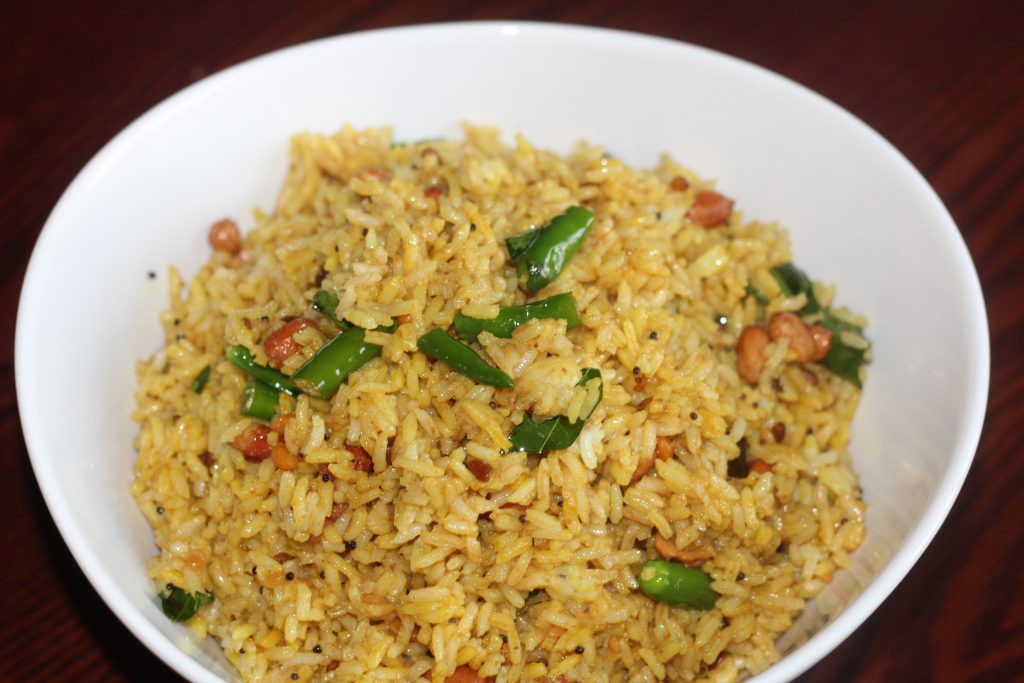
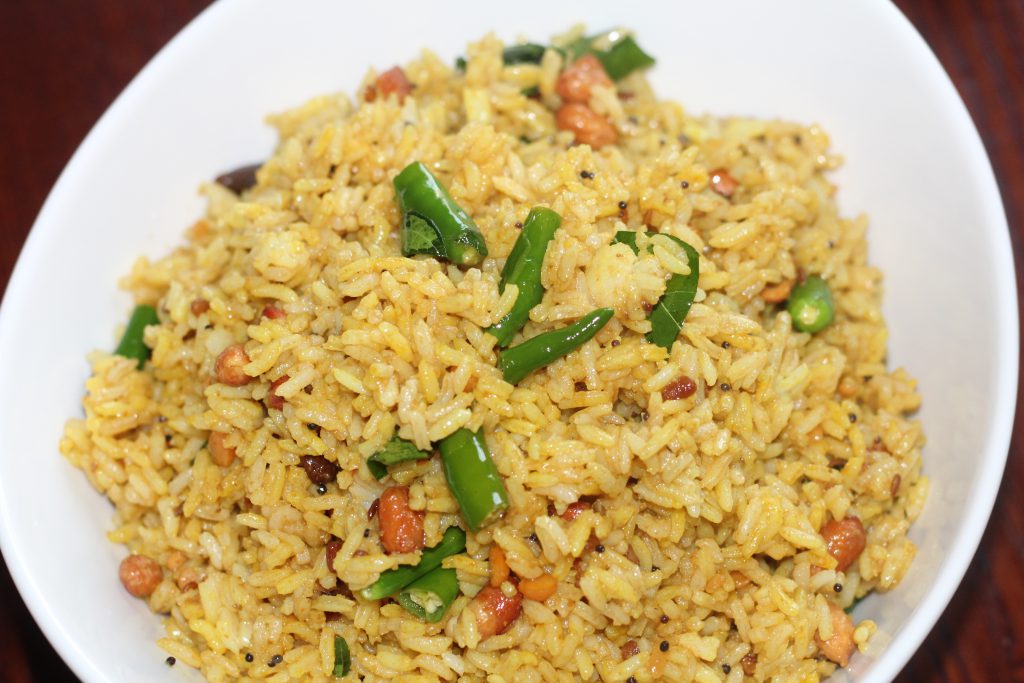



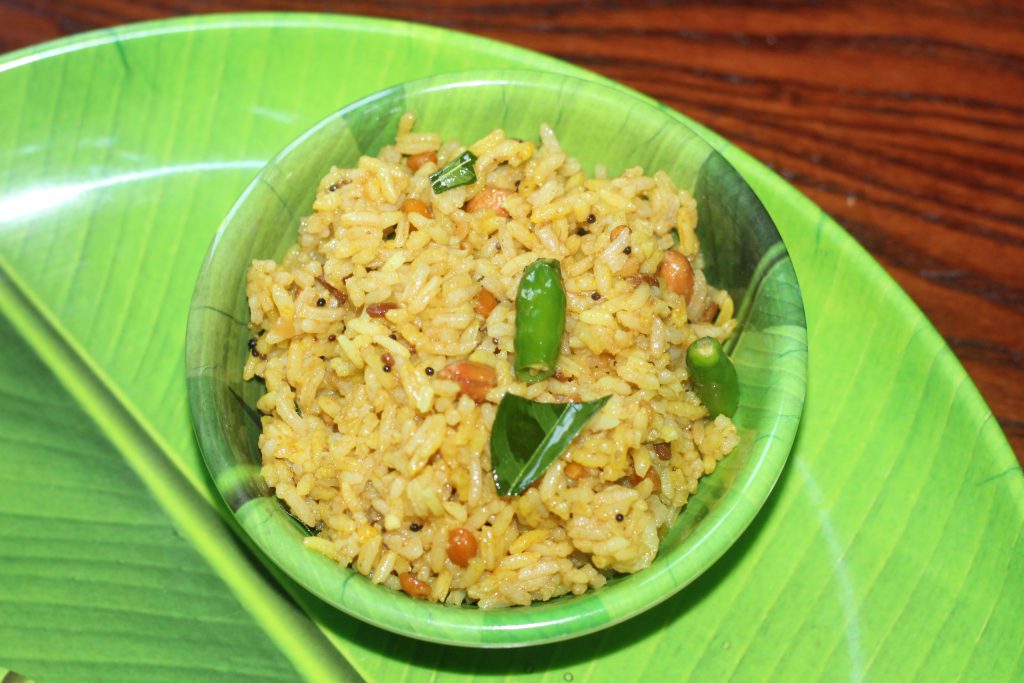
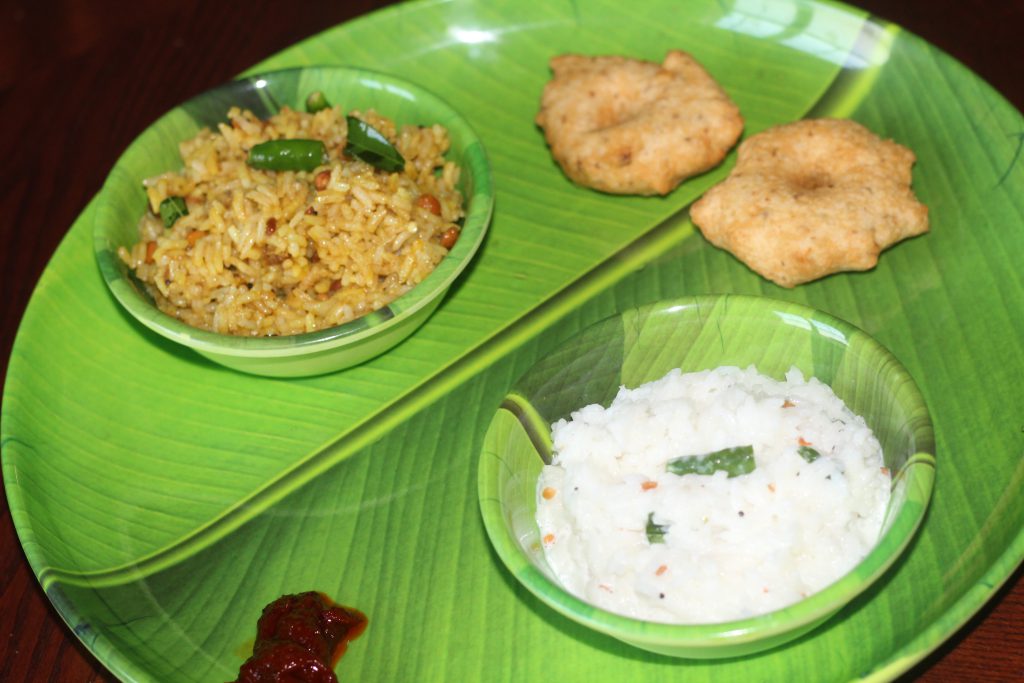
| Prep Time | 2 hours |
| Cook Time | 1 hour |
| Servings |
people
|
- 4 cups Cooked Rice
- 100 grams Tamarind size of a tennis ball
- 3 tablespoons Jaggery or sugar
- 1 tablespoon Salt as needed
- 1/2 teaspoon Turmeric
- 5 Dried Red Chilies
- 4 tablespoons Oil
- 1 tablespoon Channa Dal
- 1 tablespoon Urad Dal
- 1 teaspoon Mustard Seeds
- 1 teaspoon Cumin
- 1/4 teaspoon Asafoetida
- 3 tablespoons Oil
- 2 tablespoons Channa Dal
- 2 tablespoons Urad Dal
- 1 tablespoon Mustard Seeds
- 1/4 cup Peanuts A handful
- 1 teaspoon Cumin
- 1/4 teaspoon Asafoetida
- 5 Green Chilies Or more depending on your taste
- 5 Curry Leaves
- 1 tablespoon Salt
- 1/2 teaspoon Turmeric
Ingredients
For Tempering Over Rice
|
|
- Wash the tamarind a little and soak it in water for at least 2 hours. You can use hot water to speed up the soaking process.
- Once the tamarind is soft from the soaking. Squeeze out the juice into a big bowl. This squeezed out paste shouldn't be too watery. If it's too watery it takes a long time to cook.
- In a deep bottomed pan, add oil. Once hot, add channa dal, urad dal and fry them a little. As they start to change color, add mustard seeds. As the mustard seeds splutter, add cumin and asafoetida. Immediately add the dried red chilies.
- As the dried red chilies are turning dark, add the tamarind paste that you have aside. Now add turmeric, salt, and jaggery mix it well.
- Keep mixing this every 5 minutes as it starts boiling. It has to boil, until all the water evaporates and you are left with a thick paste.
- Keep this aside to cool down a little.
- To the rice add salt (remember you've already added salt to the paste, so adjust accordingly), turmeric and mix it well.
- First take 4 tablespoons of the paste and add it to the rice, mix it well, if it looks likes it needs more paste add some more.
- In a small pan, add oil. Once hot, add channa dal and urad dal. As they start to brown, add mustard seeds and peanuts. When the peanuts turn dark, add the cumin and asafoetida. As the mustard seeds start crackling, add green chilies and curry leaves. Mix it a little.
- Add it to the rice and stir it well. Serve as a side or as itself.
Tips:
- You can alternatively use tamarind paste if you have it and follow the same process.
- This paste can be stored in the fridge for about 10 days.
- You can add Cashews with the Peanuts as well.
- You can deseed the tamarind (I used the seedless one, but it still had seeds), remove all the stringy fiber parts, soak it in hot water and make a paste. But I find removing the fiber much more work than squeezing out the juice. So I followed it this way.
Po
